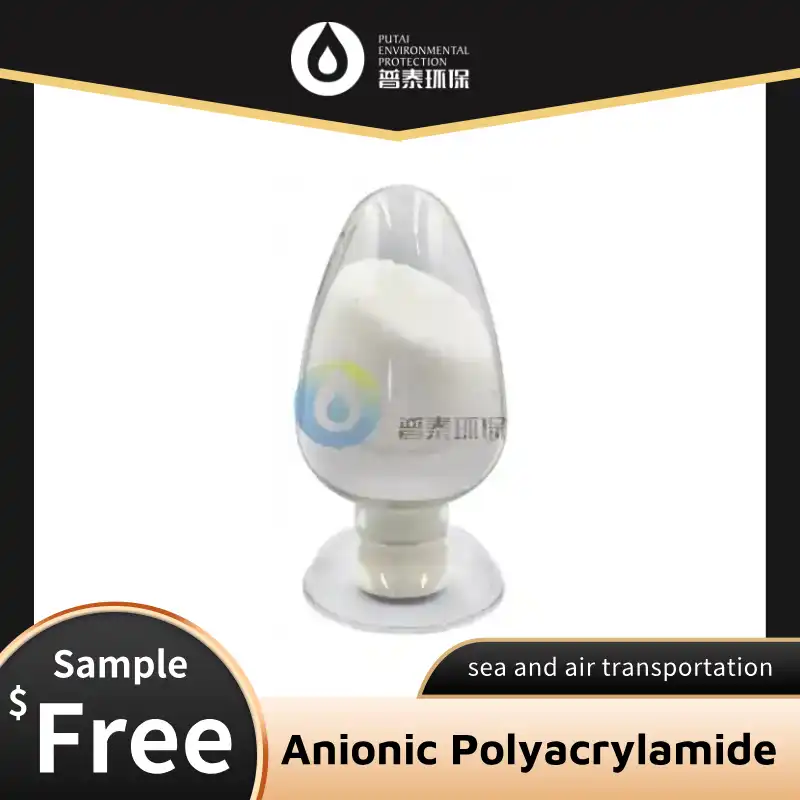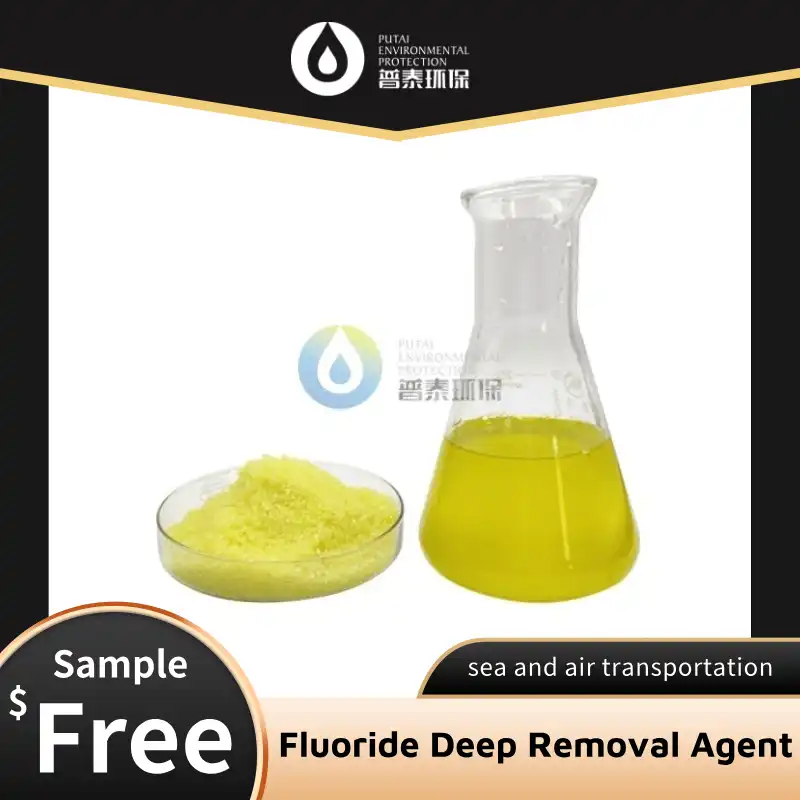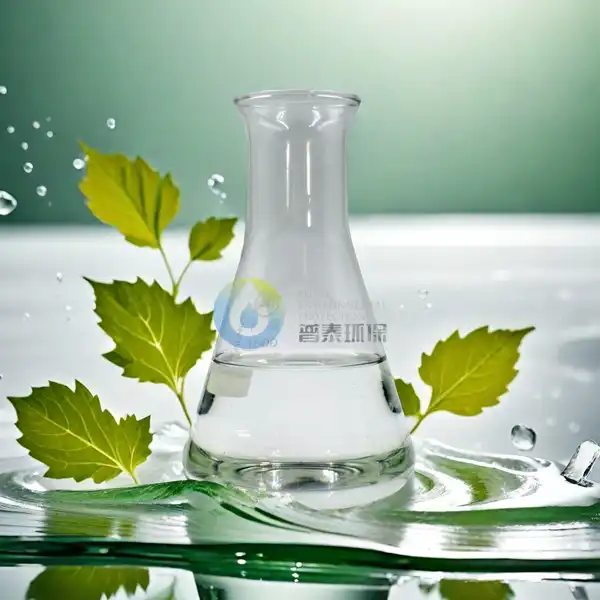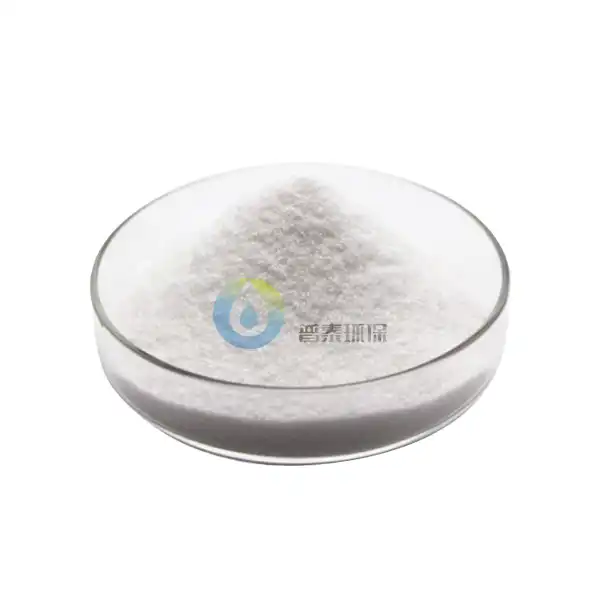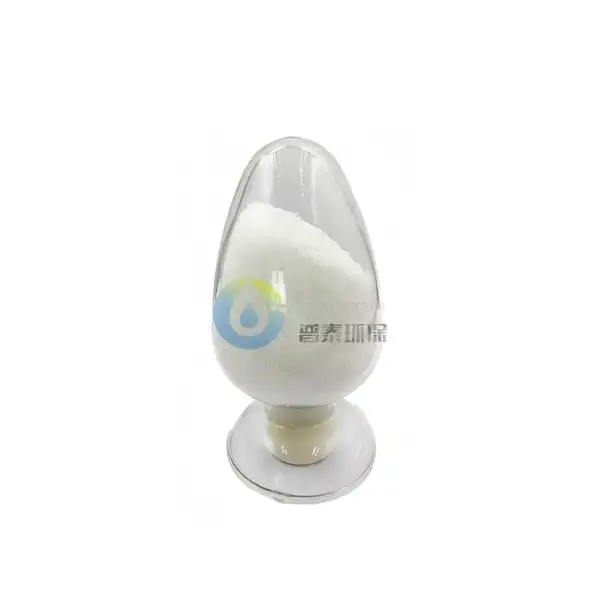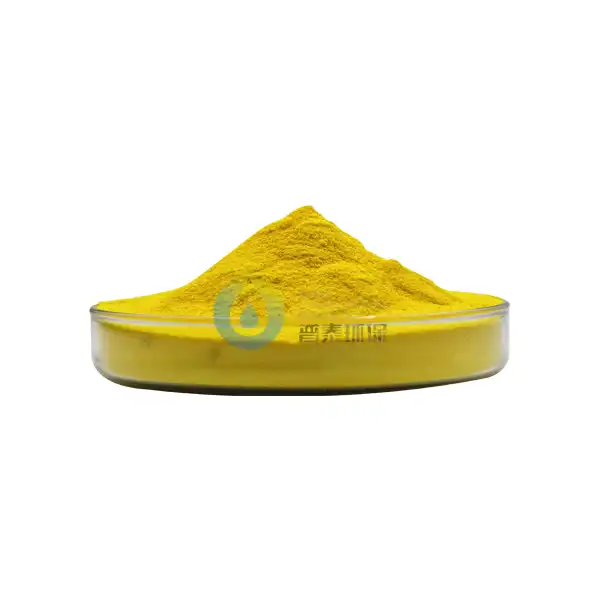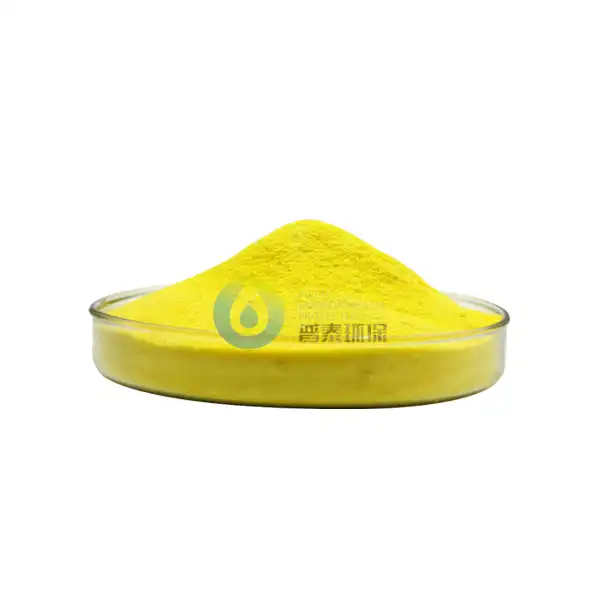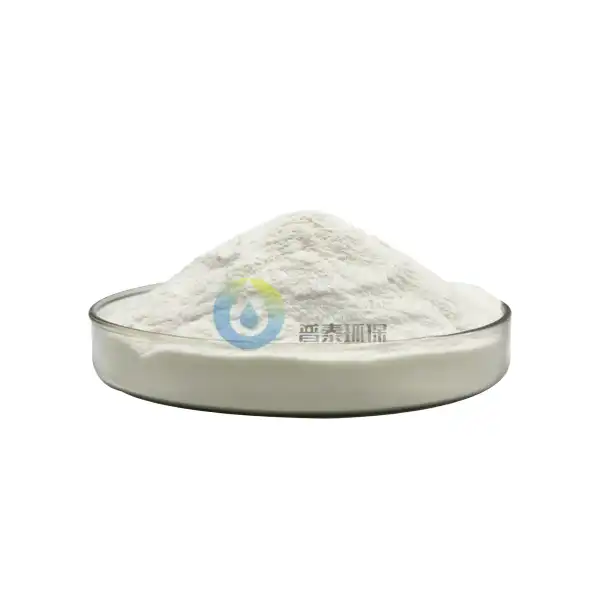What is PAC Powder Used for in Water Treatment?
Polyaluminum chloride (PAC) powder is an essential chemical compound widely used in various water treatment applications. As a high-performance coagulant, PAC powder plays a crucial role in removing impurities, contaminants, and suspended particles from water supplies. Its effectiveness in clarifying water makes it an indispensable component in municipal water treatment plants, industrial wastewater facilities, and swimming pool maintenance. This blog explores the applications, benefits, and considerations when using PAC powder for water treatment.
How Does PAC Powder For Water Treatment Differ From Other Coagulants?
Chemical Composition and Structure
The unique chemical composition of PAC powder for water treatment sets it apart from traditional coagulants like aluminum sulfate (alum) and ferric chloride. PAC is a pre-polymerized inorganic coagulant with the chemical formula [Al₂(OH)nCl₆₋n]m. This pre-polymerization gives PAC powder distinct advantages in water treatment applications. The aluminum hydroxide polymers in PAC powder are already partially formed during manufacturing, which accelerates the coagulation process when added to water. PAC powder for water treatment works effectively across a broader pH range (5.0-8.0) compared to conventional coagulants that often require strict pH adjustment. The higher basicity of PAC powder contributes to its superior performance in cold water conditions and when treating water with high turbidity levels.
Performance Benefits in Different Water Conditions
PAC powder for water treatment demonstrates remarkable adaptability across diverse water conditions. In cold water environments (below 10°C), PAC powder maintains its effectiveness due to its pre-polymerized structure, while traditional coagulants become less efficient. When treating high-turbidity water sources, PAC powder for water treatment forms stronger, more compact flocs that settle more rapidly, reducing sedimentation time compared to other coagulants. PAC powder also excels in removing natural organic matter (NOM), which is responsible for color, odor, and disinfection byproduct formation. Another distinctive benefit of PAC powder for water treatment is its lower sensitivity to temperature fluctuations, maintaining consistent coagulation efficiency across seasonal changes.
Cost-Effectiveness and Operational Efficiency
Despite its higher unit price compared to traditional coagulants, PAC powder for water treatment demonstrates compelling cost advantages. The enhanced coagulation efficiency of PAC powder typically allows for 30-50% lower dosage requirements than aluminum sulfate, resulting in reduced chemical consumption. Beyond direct chemical costs, PAC powder's superior performance yields significant operational efficiencies. The faster settling rate of flocs formed by PAC powder for water treatment increases throughput capacity in clarification systems. Additionally, the reduced sludge production minimizes dewatering, transportation, and disposal expenses. The broader effective pH range of PAC powder also diminishes the need for pH adjustment chemicals, further reducing chemical expenditures and simplifying process control.
What Are The Primary Applications of PAC Powder In Water Treatment Systems?
Municipal Drinking Water Purification
Municipal drinking water treatment plants increasingly rely on PAC powder for water treatment as their primary coagulant due to its exceptional performance in producing safe, clean drinking water. When introduced at the rapid mix stage of conventional treatment, PAC powder for water treatment effectively destabilizes colloidal particles and facilitates the removal of suspended solids, bacteria, viruses, and organic compounds. In large-scale municipal operations, PAC powder typically achieves turbidity reduction from 10-50 NTU to below 0.3 NTU, well within regulatory guidelines for drinking water. The superior pathogen removal capabilities of PAC powder for water treatment are particularly valuable in municipal applications. Additionally, PAC powder's effectiveness in removing natural organic matter addresses the formation of disinfection byproducts during chlorination.
Industrial Wastewater Processing
The industrial sector faces increasingly stringent discharge regulations, making effective treatment solutions essential. PAC powder for water treatment has emerged as a versatile solution across diverse industrial applications. In the pulp and paper industry, PAC powder for water treatment achieves significant color removal and reduces chemical oxygen demand (COD), allowing facilities to meet environmental compliance requirements. Metal finishing operations benefit from PAC powder's ability to precipitate dissolved heavy metals. The oil and gas sector utilizes PAC powder for water treatment in managing produced water, where it effectively separates emulsified oils and suspended solids. In food and beverage processing, PAC powder facilitates rapid biodegradable material removal, reducing surcharges imposed by municipal treatment systems.
Recreational Water Quality Management
Swimming pools, water parks, and other recreational water facilities face unique water quality challenges. PAC powder for water treatment has become increasingly popular in recreational water management due to its effectiveness in clarifying water rapidly without introducing excessive amounts of chlorine-consuming compounds. When used in swimming pool filtration systems, PAC powder for water treatment works synergistically with disinfectants by removing organic matter that would otherwise deplete chlorine levels. A significant advantage of PAC powder in recreational applications is its ability to clarify cloudy water quickly—typically returning pool water to acceptable clarity within 4-8 hours after treatment. In larger water attractions, PAC powder for water treatment helps maintain water quality, preventing biofilm formation in pipes and filter media that could harbor pathogens.
How Should PAC Powder For Water Treatment Be Properly Dosed and Applied?
Calculating Optimal Dosage Rates
Determining the correct dosage of PAC powder for water treatment requires careful consideration of multiple water quality parameters and treatment objectives. The starting point for dosage calculation typically involves jar testing, where various concentrations of PAC powder for water treatment are applied to water samples and evaluated for parameters like turbidity reduction, color removal, and settling time. Source water turbidity serves as a primary determinant of dosage requirements—highly turbid waters may require 40-80 mg/L of PAC powder, while moderately turbid waters typically need 20-40 mg/L, and relatively clear waters might be effectively treated with 5-20 mg/L. The presence of natural organic matter significantly impacts PAC powder dosing requirements. Temperature considerations are equally important, with colder waters generally requiring higher PAC powder for water treatment dosages to overcome reduced coagulation kinetics.
Mixing Techniques and Contact Time Requirements
The effectiveness of PAC powder for water treatment heavily depends on proper mixing procedures and adequate contact time. The dissolution process begins with preparing a PAC solution at a concentration of 5-10%, using mechanical mixers to achieve complete dispersion. For optimal activation, PAC powder for water treatment should be mixed with water for a minimum of 30-60 minutes before application. In the treatment process itself, PAC application follows a distinct sequence of mixing intensities. Initial rapid mixing requires high energy input for 30-90 seconds, creating conditions for charge neutralization and initial particle collision. This phase transitions to a flocculation period with moderate mixing for 10-30 minutes, allowing floc growth without breakage. Contact time requirements for PAC powder vary based on treatment objectives: turbidity removal may require only 5-15 minutes of proper flocculation time, while effective removal of dissolved organic matter may necessitate 15-30 minutes.
Storage and Handling Safety Protocols
Proper storage and handling of PAC powder for water treatment are critical for maintaining product efficacy, ensuring operator safety, and preventing environmental contamination. PAC powder should be stored in cool, dry conditions with temperatures between 10-30°C and relative humidity below 70% to prevent moisture absorption. When properly stored, PAC powder for water treatment typically maintains full effectiveness for 12-24 months. Storage facilities should incorporate secondary containment systems to prevent environmental release in case of spills. Material compatibility is another important consideration—PAC powder for water treatment should be stored in containers made of appropriate materials including polyethylene, polypropylene, or fiberglass-reinforced plastic. Personnel safety requires comprehensive protocols including mandatory use of appropriate personal protective equipment. Proper dissolution procedures are essential for both safety and efficiency—operators should always add PAC powder to water to prevent exothermic reactions and potential splashing.
Conclusion
PAC powder for water treatment has proven to be a versatile and effective solution for various water purification challenges. Its superior coagulation properties, adaptability to different water conditions, and cost-effectiveness make it an excellent choice for municipal, industrial, and recreational water treatment applications. When properly dosed and applied, PAC powder delivers exceptional results in removing contaminants, improving water clarity, and ensuring regulatory compliance. As water quality standards continue to evolve, PAC powder remains at the forefront of water treatment technology.
Xi'an Putai Environmental Protection Co., Ltd. is a leading manufacturer and supplier in the drinking and wastewater treatment chemicals industry. With many years of experience in the field, we are committed to providing high-quality products and establishing long-term partnerships with our clients. Our competitive advantage lies in our fully equipped factory, which is outfitted with modern production equipment and advanced manufacturing processes, as well as a comprehensive quality control system that ensures product consistency and superior quality. Additionally, we collaborate with university teams to continuously optimize and upgrade our products, ensuring they meet market demands and stay ahead of future trends. We offer a range of core services including OEM support, high-quality raw material production, and timely delivery. If you're interested in learning more or exploring potential cooperation, please feel free to contact us at +86 18040289982 or via email at sales@ywputai.com. We look forward to the opportunity to work with you.
References
1. Johnson, P. D., & Gibbons, M. K. (2022). Comparative analysis of aluminum-based coagulants in drinking water treatment: Performance and mechanism. Water Research, 185, 116-131.
2. Zhang, Q., & Liu, S. (2023). Applications of polyaluminum chloride in municipal water treatment: A comprehensive review. Journal of Water Process Engineering, 51, 102-118.
3. Kimura, M., Matsui, Y., & Kondo, K. (2021). Optimization of PAC dosing strategies for enhanced removal of natural organic matter and disinfection byproduct precursors. Environmental Technology, 42(8), 1243-1257.
4. Wang, H., Li, X., & Chen, Y. (2022). Industrial wastewater treatment using polyaluminum chloride: Case studies across multiple sectors. Water Environment Research, 94(3), 289-304.
5. Rodriguez-Narvaez, O. M., & Peralta-Hernandez, J. M. (2021). Recent advances in coagulation-flocculation processes for water and wastewater treatment: A critical review. Chemical Engineering Journal, 419, 129-145.
6. Thompson, R. B., & Anderson, L. C. (2023). Safety considerations and best practices for handling water treatment chemicals in municipal facilities. Journal of Environmental Health and Safety, 88(2), 76-91.

